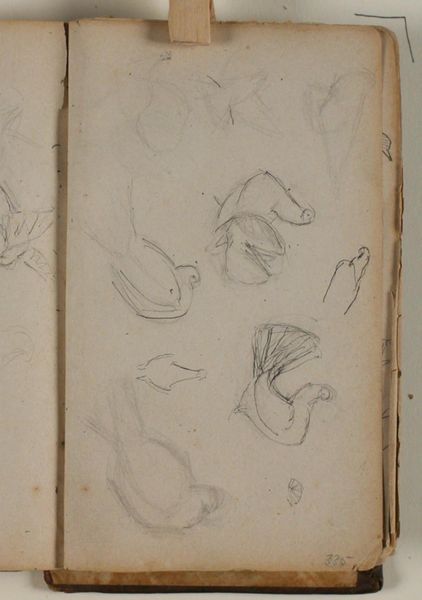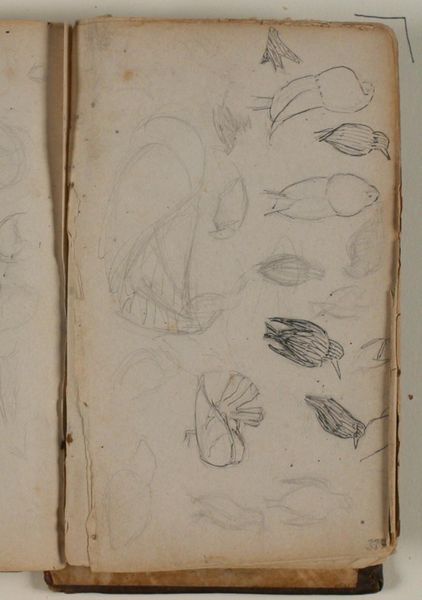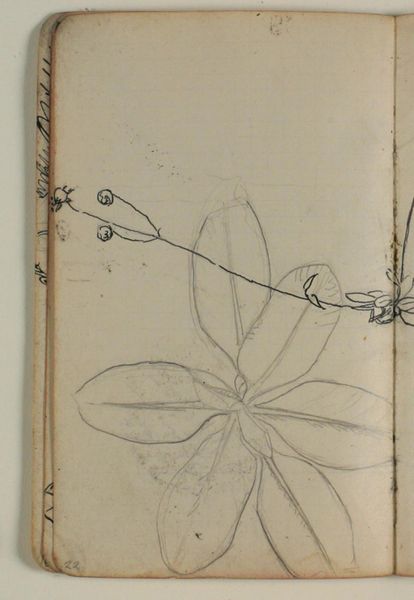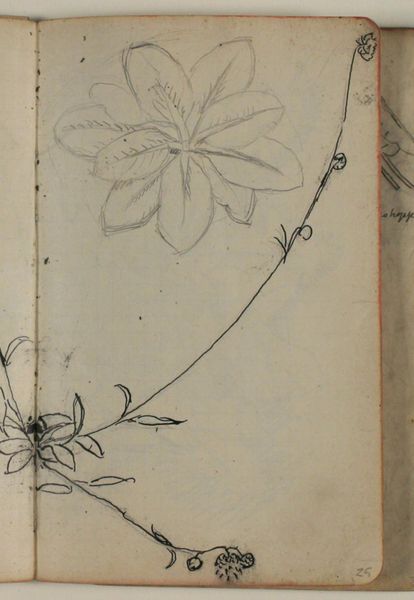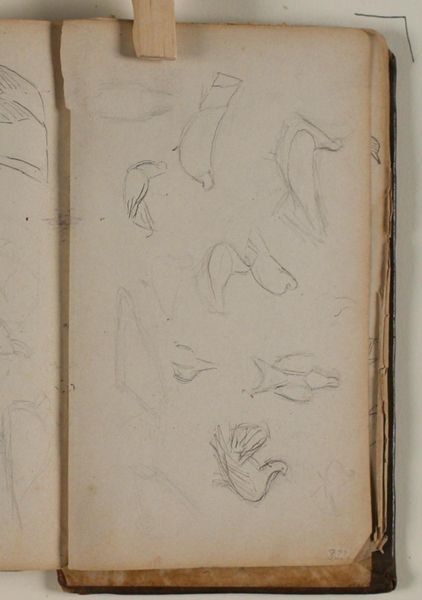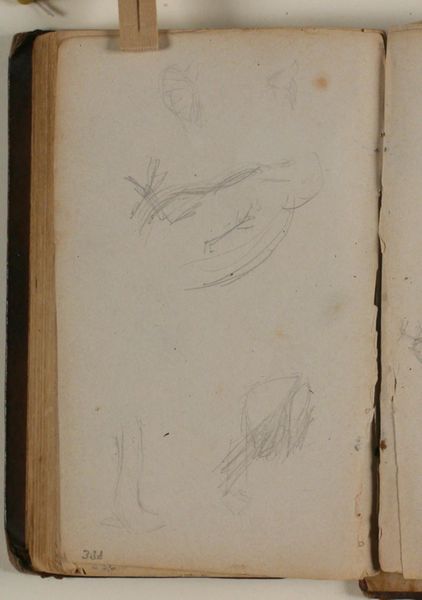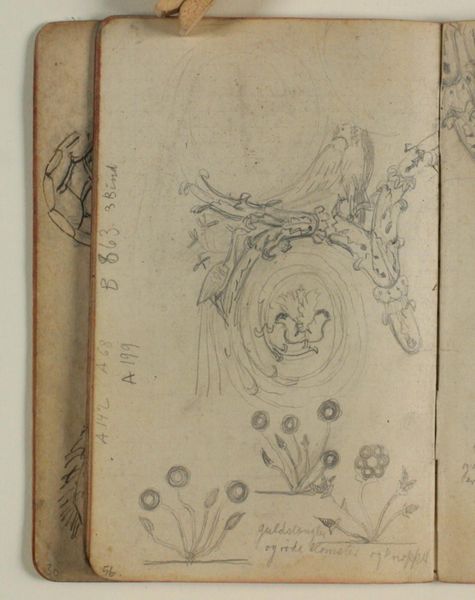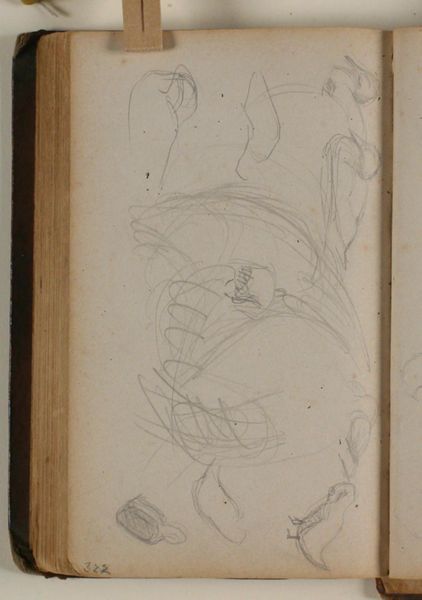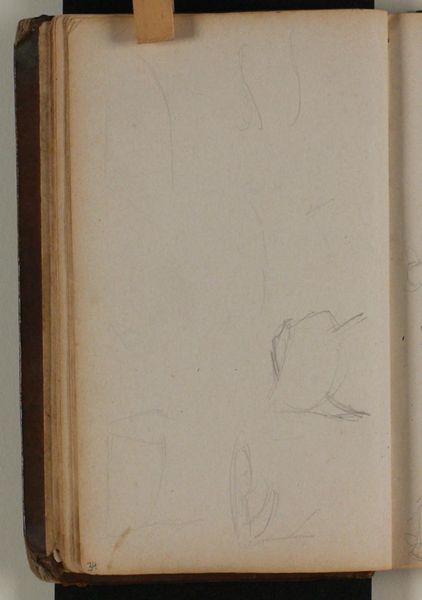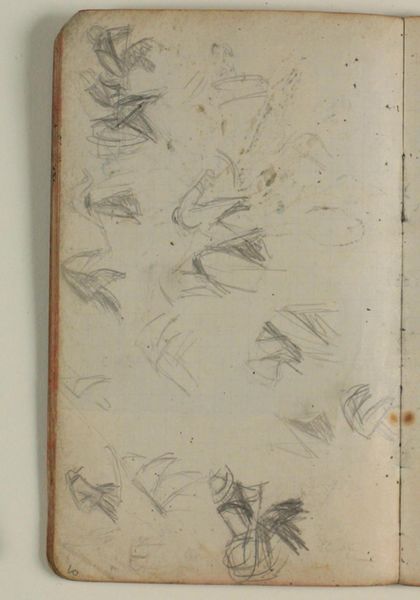
drawing, coloured-pencil, paper, pencil
#
drawing
#
coloured-pencil
#
landscape
#
paper
#
coloured pencil
#
plant
#
pencil
#
sketchbook drawing
#
naturalism
Dimensions: 161 mm (height) x 96 mm (width) (bladmaal)
Curator: We’re looking at “Plantestudier,” or "Plant Studies," by Niels Larsen Stevns, created sometime between 1906 and 1910. It's currently housed here at the SMK, Statens Museum for Kunst. The piece is a sketchbook page filled with pencil and colored-pencil drawings of plants. Editor: My immediate impression is of something quite delicate, almost tentative. The light pencil work on aged paper gives it a feeling of ephemeral beauty, like capturing a fleeting moment in nature. Curator: Indeed. Stevns was working within a tradition of naturalism, aiming to depict the natural world as accurately as possible. Sketchbooks like this were common tools for artists to study nature firsthand, recording observations for later studio work. The sketches give us insight into his methodology. Editor: I’m struck by the contrast between the precisely rendered outlines of the blossoms and the more suggestive, fainter impressions of plant forms beneath. The composition uses the negative space quite cleverly, allowing the eye to complete the shapes. What do you think that choice brings to the piece? Curator: I would say that these studies, these glimpses, are crucial for understanding Stevns' creative process, in this period, when art began moving out of academic style. These are not finished works for public consumption but are rather studies used for learning the basic tenets of Naturalism to push art forward. It suggests a democratizing approach. Editor: So, it's less about polished presentation and more about functional record-keeping, or a form of private note taking? This raw and unfinished quality lends the drawing an almost accidental aesthetic appeal. The page feels very open. Curator: Precisely. And thinking about where this piece now lives, how is it recontextualized in this gallery space, as opposed to simply existing as a page in an artist’s personal sketchbook? Editor: Interesting how moving this sketch to a museum context has transformed its reception. It compels viewers to focus less on perfection and more on the intimate, unfolding story of observation, an ephemeral study brought into the light. Curator: Absolutely, something initially private and utilitarian becomes available to public view and scholarship. Editor: Looking at this I feel both nature's beauty and Stevns’ artistic discipline keenly observed. Curator: And for me, considering Stevns' legacy alongside evolving attitudes to nature at the turn of the 20th century brings historical depth and allows us to appreciate art in context.
Comments
No comments
Be the first to comment and join the conversation on the ultimate creative platform.


